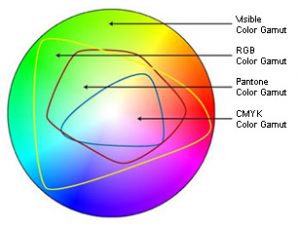Rack cards are a staple of print marketing, and perhaps their greatest asset is their size. The standard 4″ x 9″ size makes it convenient, concise and appealing. As opposed to a flyer, pamphlet or folder of materials, the rack card is just the right size to pick up, slip into a coat pocket or purse and carry for later reference. This size forces you as a designer or copy writer to edit down your information and graphics a bit – leaving the essential information, but not an overload of details or offers. Here are a few tips to get the most out of your next rack card design:
- The TOP half is your prime real estate: depending on both the way rack cards are typically displayed and the natural path the human eye travels across a page, the top half of the front of your rack card needs to include an eyecatching image, graphic, or type. The split second in which a person’s eye passes over the rack card is the only chance you will have to catch their attention and entice them to stop, take in the image or word and hopefully pick up the card to read further. Do not bury the main impact of the design at the bottom of the card, as many times this will be covered up in a rack display.
- Include a clear call to action: The size of the card will encourage you to include only the important information. But be sure this has both a clear and easy to follow call to action: i.e., call this number, click this QR code, bring this card in today for 10% off. And don’t forget your contact information – phone number, website, and physical address. Hopefully they will be referring back to this card to find you.
- Plan a series: Rack cards can be used effectively to advertise or inform about a series of products or services. Design a set with the the same graphic features, but vary the color of each so they are all complimentary. You could do one card for each of your business’ services, product lines, sale promotions, company policies, etc.
- Mail ’em out to a targeted audience: Rack cards are 4″ x 9″ for a good reason – a standard #10 envelope is 4.125″ x 9.5″. Rack cards are built to be mailed. You can design them with a mail panel and use them as a “self-mailer,” saving the expense of envelopes. Target your mail recipients with a purchased list selected based on location or household income or other specifications. Also, print some pieces on heavy card stock to be used as in-store displays or handouts, and others on text weight paper to be included in mailings, billing, or any other bulk mail that you are sending out. If you are already contacting customers for another reason by mail, don’t miss the chance to include a text weight rack card insert that won’t increase your per piece mail cost.
- Invest in good display racks: keep a well stocked display of your rack cards in your lobby, waiting area or near registers where customers or clients will normally pause. You can also have employees hand them out during the course of other transactions, and keep them handy for people to pick up as they come and go.
- Include a QR code: quick response codes will help link your print marketing to your website and online marketing efforts in a trackable manner. Most folks are now familiar with what a QR code looks like and how to “click” it with a smart phone to access more online information. Let your rack cards serve as a link between your on and off line business.
Finally, choose a printer that can help you define the look of your printed materials, keep your products in line with the look of your brand, advise you on marketing strategies, mail and e-commerce solutions, and who can suggest other options you may not have thought about for your marketing budget. That advice comes to you free of charge – an amazing bonus of working with a quality, professional print/marketing provider.













